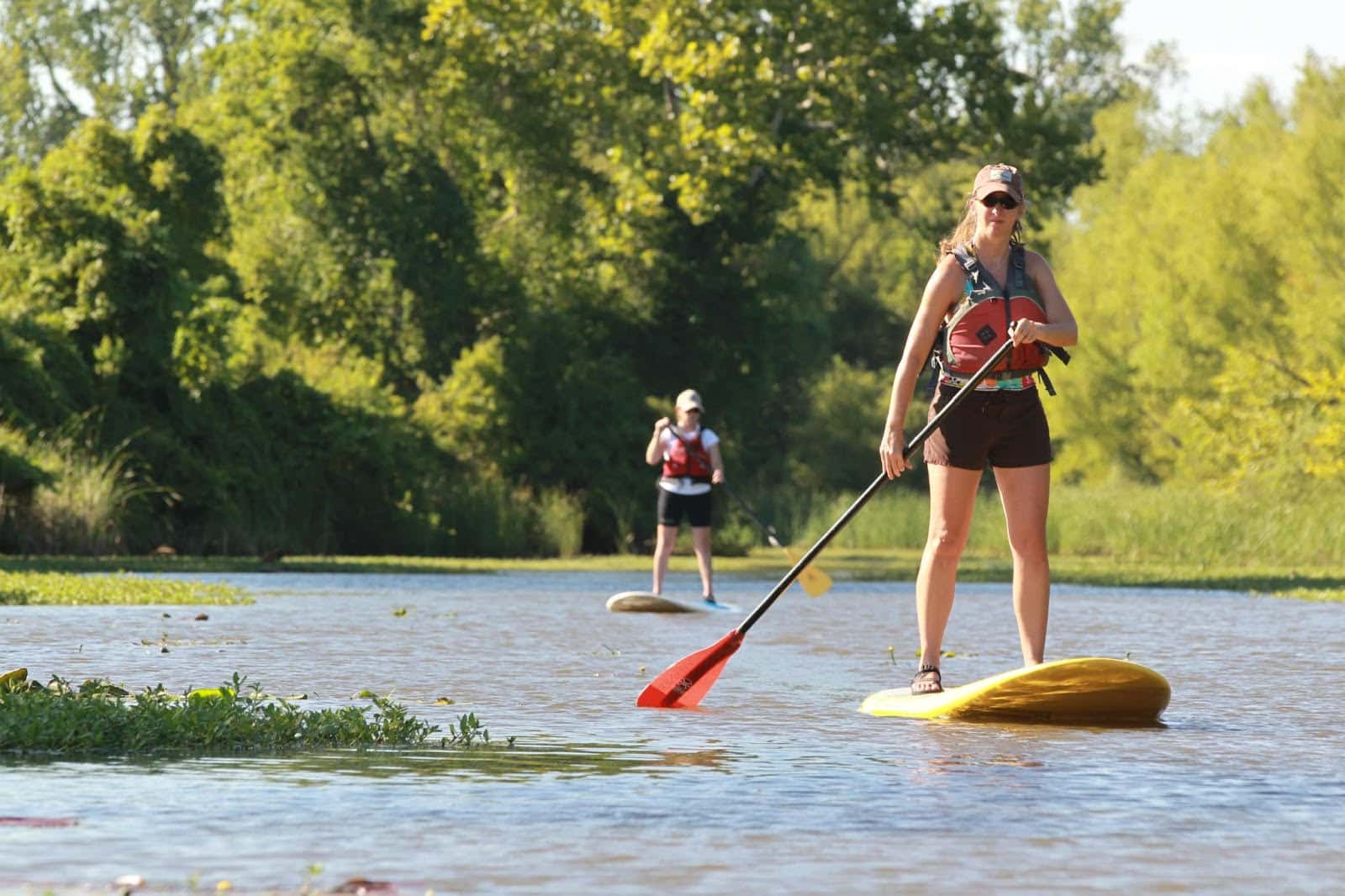Paddlesports see national rise in fatalities
ON 07-03-2024

LITTLE ROCK — Sales of canoes, kayaks and paddleboards have surged since 2020, with more Americans than ever taking to the water aboard a paddling craft. According to the U.S. Coast Guard, boating fatalities associated with padding craft have increased as well.
According to the USCG’s 2023 Boating Statistics, 304 injuries requiring medical attention were recorded last year from paddle craft operators, resulting in 189 fatalities. This accounted for nearly one-third of the total boating fatalities recorded during the year. Arkansas, however, bucked this trend, recording only two fatalities.
Sydney Grant, AGFC boating safety coordinator at the Arkansas Game and Fish Commission’s Hot Springs regional office, says boaters should still pay heed to the warning, especially as the summer sun drives many more users to Arkansas’s waterways.
“Motorboats still make up the vast majority of our accidents and fatalities here,” Grant said. “But we want everyone out there to make it home safely, and it really only takes a little extra effort to do so.”
Paddling and PFDs
Personal Floatation Devices (aka life-jackets) are just as essential to kayakers, paddleboarders and other recreational boaters as they are to people using sailboats and motorboats.
“Of the nine deaths that occurred during 2023 in all of Arkansas’s boating accidents, six were the result of drowning,” Grant said. “None of those victims were wearing a life jacket.”
Grant says the same laws for life-jacket wear apply to paddlers as they do for motorboats. Children 12 or under are required by law to wear their life jacket anytime the craft is on the water. People over 12 must have a life jacket within easy reach while onboard the vessel.
“Because of limited storage and the increased chance of tipping the craft, it’s always advisable to just go ahead and wear the life jacket while you’re on the water, period,” Grant said.

Know Your Limits
Grant says one factor at play in paddlesports accidents is the increasing popularity of inexpensive vessels being used for waters for which they are not suited.
“There has been a big increase in inflatable paddleboards and economy-priced kayaks on the shelves of stores and on the water,” Grant said. “They have been great at getting more people on the water, but they are not typically built to handle swift water.”
Just like the capabilities of the craft should dictate your use, your personal ability should be a major consideration when heading out for a day on the water.
“If you’re a beginner, you definitely should stay near shore and stay in calmer water,” Grant said. “Current and wind can put you in some bad situations if you’re not familiar with paddling, and it’s best to learn how to handle those situations with the help of an advanced paddler or outfitter showing you the ropes.”
Find a Float Buddy
Outfitters abound on some of Arkansas’s more prominent float streams, but some lesser-known floats and reservoirs don’t have facilities devoted to paddlesports. Regardless of the area you choose to float, it’s always a smart idea to pair up with a friend or group to enjoy the water.
“It’s safer with someone else around to help, especially if that person is more experienced than you,” Grant said. “And it’s more fun for a lot of people to get out and enjoy the outdoors together. If you have problems finding someone to float with, there are groups like the Arkansas Canoe Club who have Facebook Groups and hold regular events to enjoy floating together.”
Just like with other forms of boating, it’s important to let someone know where you’re headed and when to expect you back. If you do find yourself in a bad situation that delays your return, it’s always good to have someone who is able to check on you. This is especially true for some of Arkansas’s more remote float streams and waters. The solitude may be nice, but it also means fewer people to help in the case of an emergency.

Plan for the Conditions
Canoes, kayaks and paddleboards also are much more susceptible to weather conditions than larger watercraft, especially in the hands of beginners. Grant says it’s important to look at the weather report to make sure you aren’t surprised midway through your outing.
“Wind and paddlesports don’t go together, and if you’re caught away from shore and a storm rolls in, it can be rough getting back in,” Grant said. “Also, if you’re on a stream, a storm upstream of you can drastically change the water level where you are and create dangerous current. Never float at flood stage.”
Grant says paying attention to outfitters is always a good idea. If they aren’t putting clients on the water, it’s a good idea to stay off as well.
“Some outfitters are more than happy to tell you about floating conditions, even if you aren’t going with them,” Grant said. “They want everyone to make it home safely, and so do we.”
####
CUTLINES:
GROUP OF KAYAKS
Sales of kayaks, canoes and paddleboards have exploded in recent years.
KAYAKER
Choose the right kayak for the type of water you’ll be floating.
PADDLEBOARDS
Paddleboards have become increasingly popular on flat waters, largely due to their portability and price.
Recent News

AGFC fish attractors unlock offshore fishing code
Jul. 8, 2025

Arkansas Wildlife Weekly Fishing Report
Jul. 3, 2025
Subscribe to Our Weekly Newsletter E-mails
Don’t miss another issue. Sign up now to receive the AGFC Wildlife Weekly Newsletter in your mailbox every Wednesday afternoon (Waterfowl Reports are published weekly during waterfowl season and periodically outside the season). Fishing Reports arrive on Thursdays. Fill in the following fields and hit submit. Thanks, and welcome!
